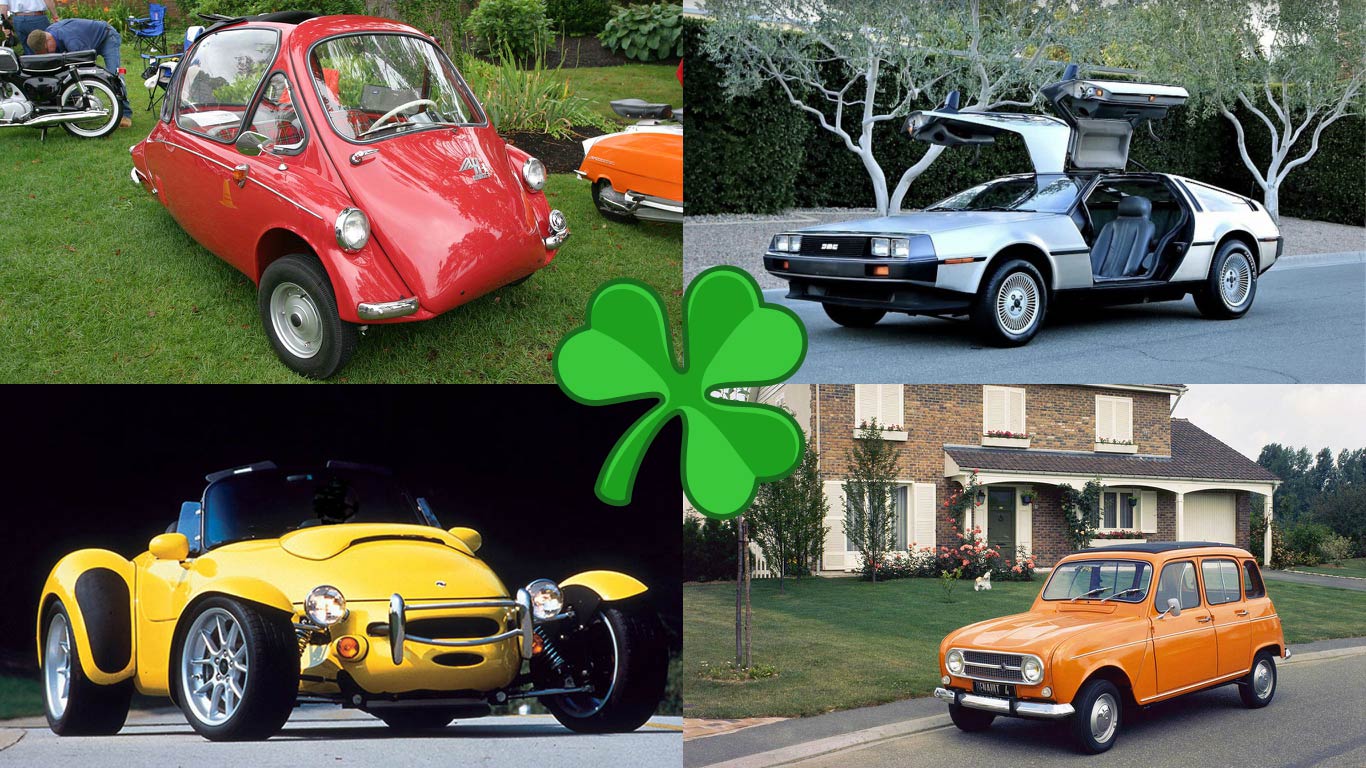
It’s a good time to be Irish right now. Ireland is on the brink of winning the Six Nations Championship, and looks set to do it on St Patrick’s Day. With the luck of the Irish clearly in the air, we’ve delved into the country’s automotive history.
DeLorean DMC-12
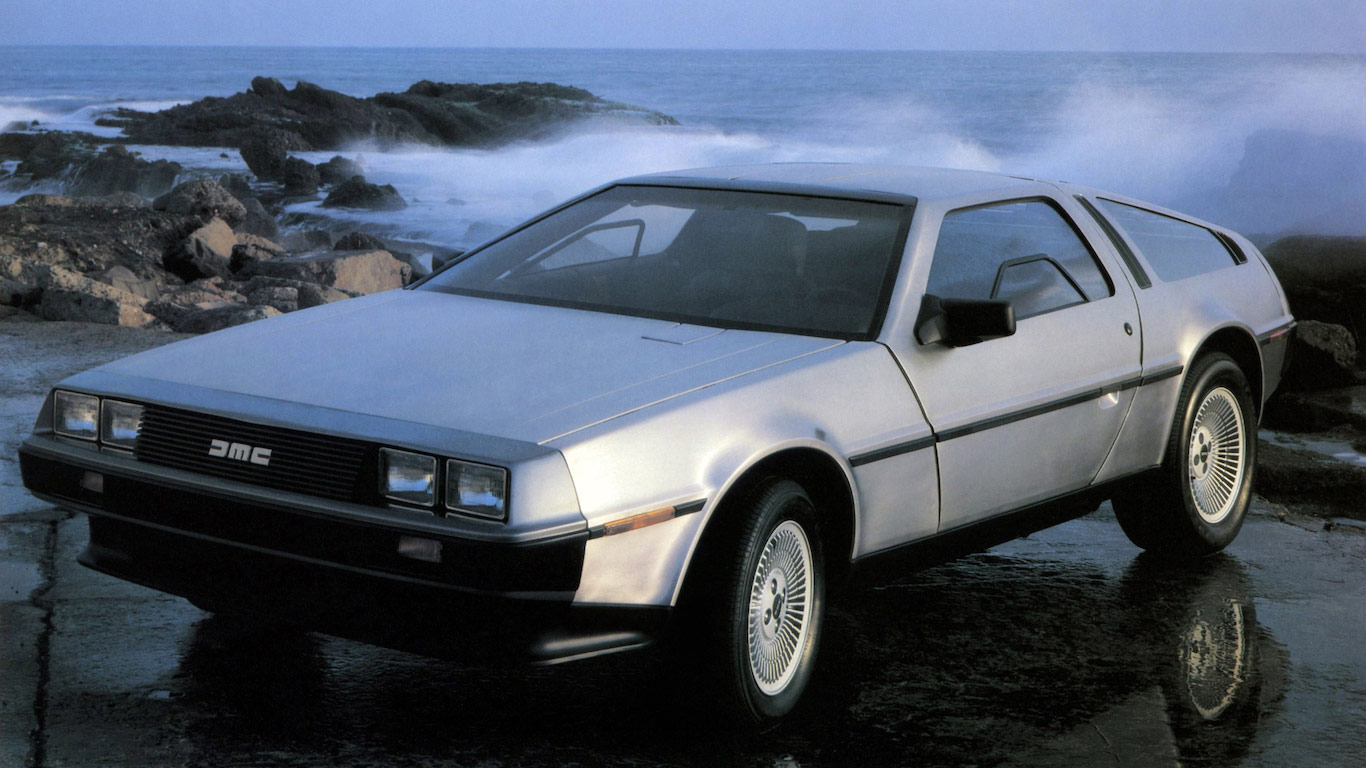
Let’s deal with the obvious one first. The infamous tale of John DeLorean and his radical DMC-12 is one of the greatest scandals in motoring history. With the backing of the UK government, DeLorean set up shop in the Belfast suburb of Dunmurry, with bold ambitions for the DMC-12.
Over 8,500 examples of the stainless steel-bodied mid-engined sports car were built between 1981 and 1983. However, reliability issues and cashflow problems soon took hold, with DeLorean later caught in an FBI sting operation for conspiring to smuggle drugs. Bankruptcy soon followed, taking the DMC-12 and some 2,500 jobs with it.
Shamrock
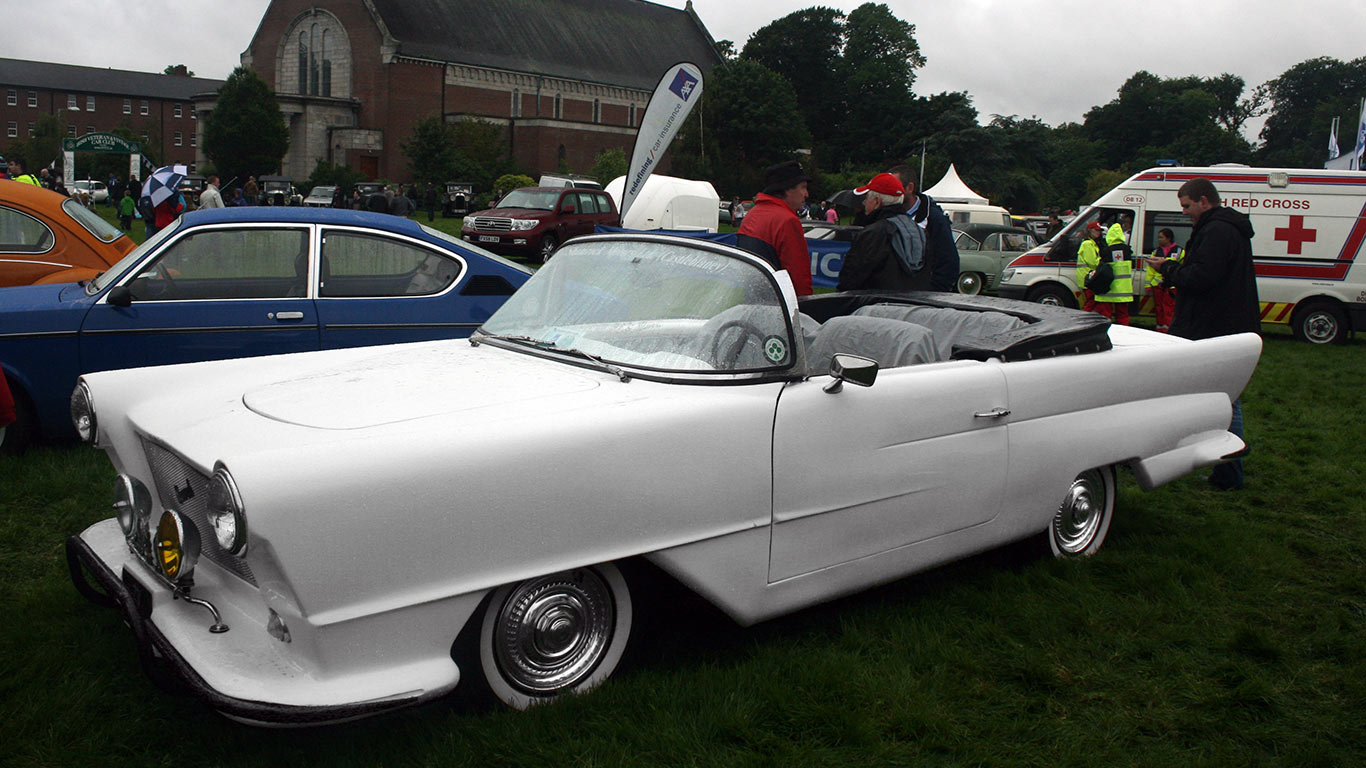
John DeLorean wasn’t the first American businessman to use Ireland as a place to build automotive dreams. James Conway and William Curtis had done so some 25 years earlier. Castleblayney in County Monaghan was the location of choice for the Shamrock factory, with production beginning in 1959.
The Shamrock was intended to bring prosperity to Ireland, with up to 10,000 cars a year being exported back to America, and a design aimed at the ‘personal luxury car’ market. The reality failed to match expectations, though, and less than 10 cars were built in six months. That the gigantic fibreglass body had to make do with a deeply underwhelming 51hp Austin engine certainly didn’t help.
Crosslé Car Company
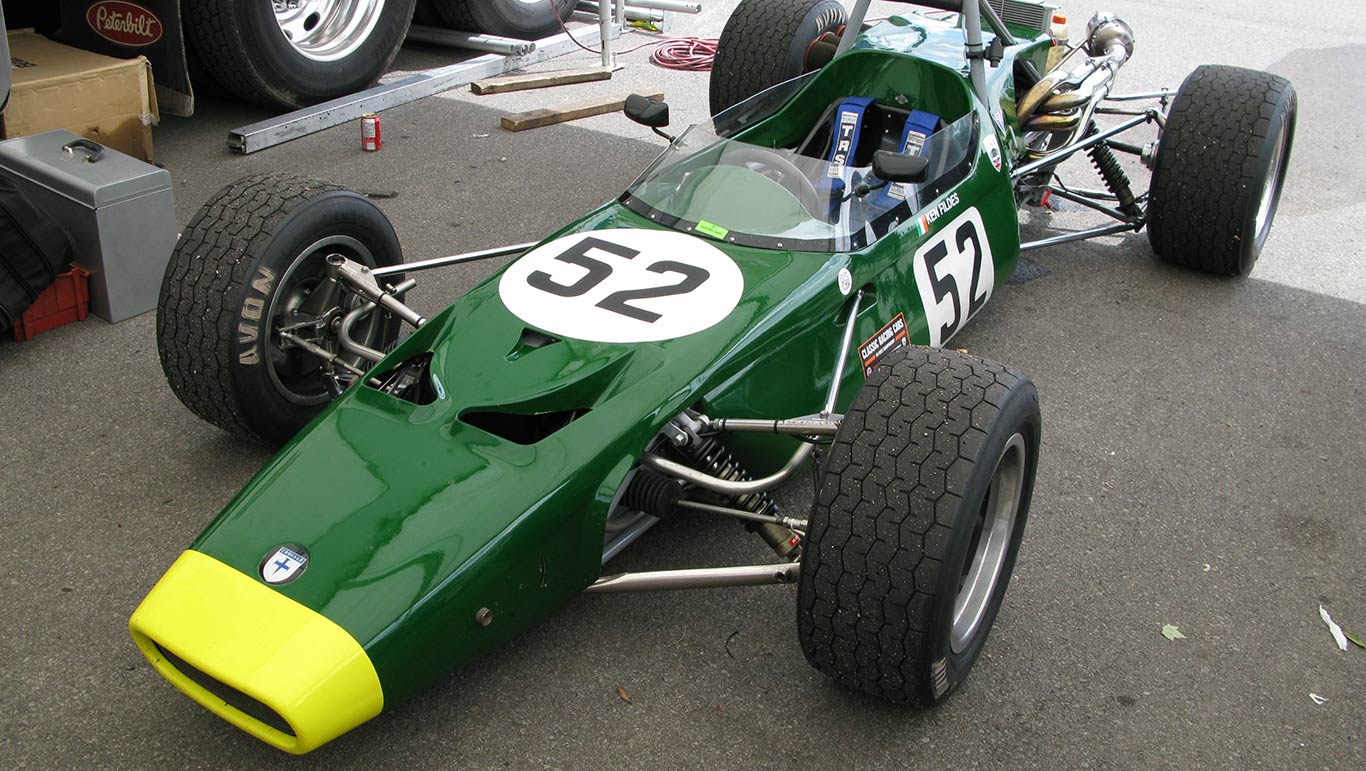
It might not be particularly well known, but the oldest racing car manufacturer in the UK can be found Holywood, Belfast. Founded in 1957 by John Crosslé, the first cars were made purely for Crosslé himself to go racing, although he found himself asked to create examples of his Ford-powered designs for others.
Mainstream success would come with the Formula Ford series, which would see the likes of Nigel Mansell, Eddie Irvine, and John Watson experience success behind the wheel of a Crosslé. John Crosslé passed away in 2014, but the company continues to provide historic race cars and the parts needed to keep them on-track.
TMC Costin / Panoz Roadster
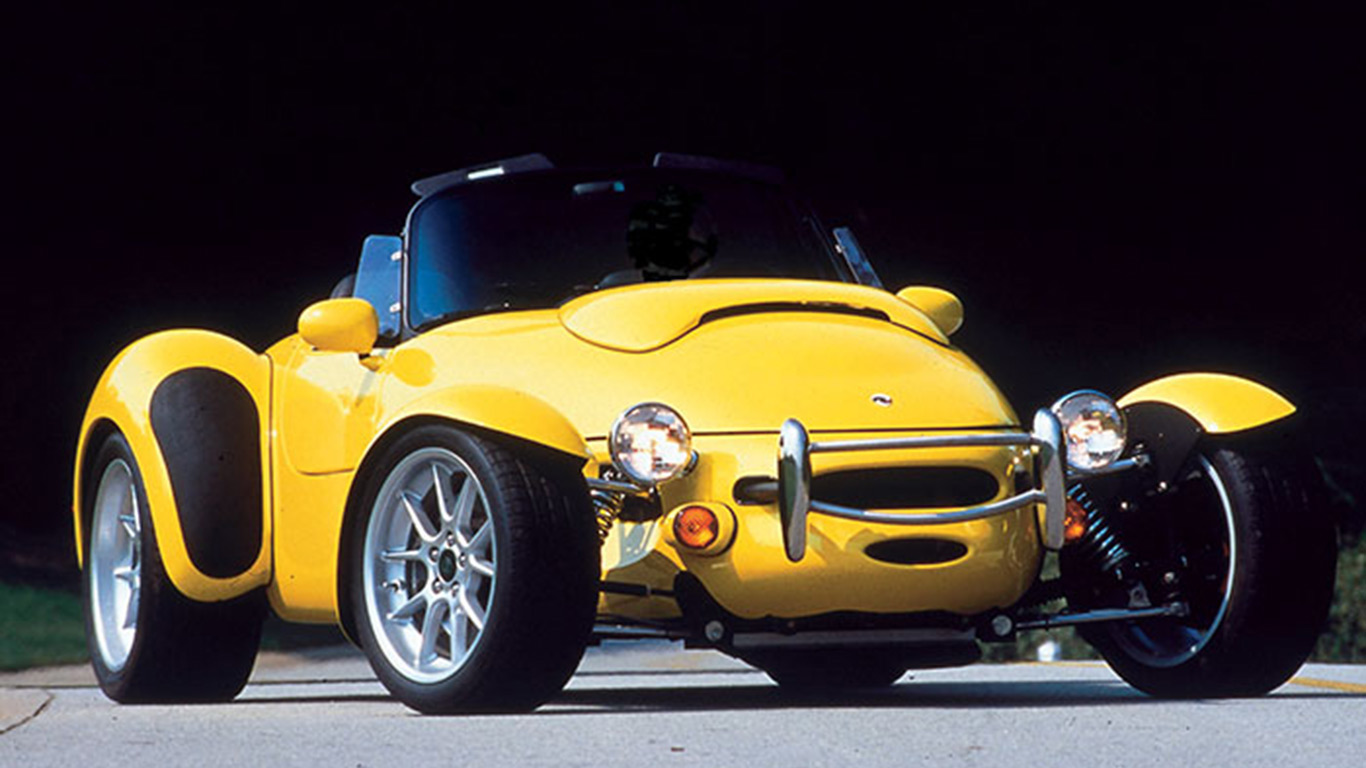
Braselton, Georgia is several thousand miles away from Wexford in Ireland, but the two were linked by a chassis designed by Frank Costin. Having worked as a consultant for Lotus, and co-founded Marcos, Costin was renowned in the sports car industry. So his design for the TMC Costin – a rival for Lotus Seven-inspired Westfields and Caterhams – should have been a hit.
Produced by the Thompson Motor Company between 1983 and 1987, less than 40 examples were built before the company hit bankruptcy. The chassis design proved attractive, though, and Don Panoz snapped up the rights to it. Across the Atlantic a new body was added, along with a V8 Ford engine, creating the fearsome Panoz Roadster. Notably, the Panoz logo includes a shamrock at its centre.
Volkswagen Beetle
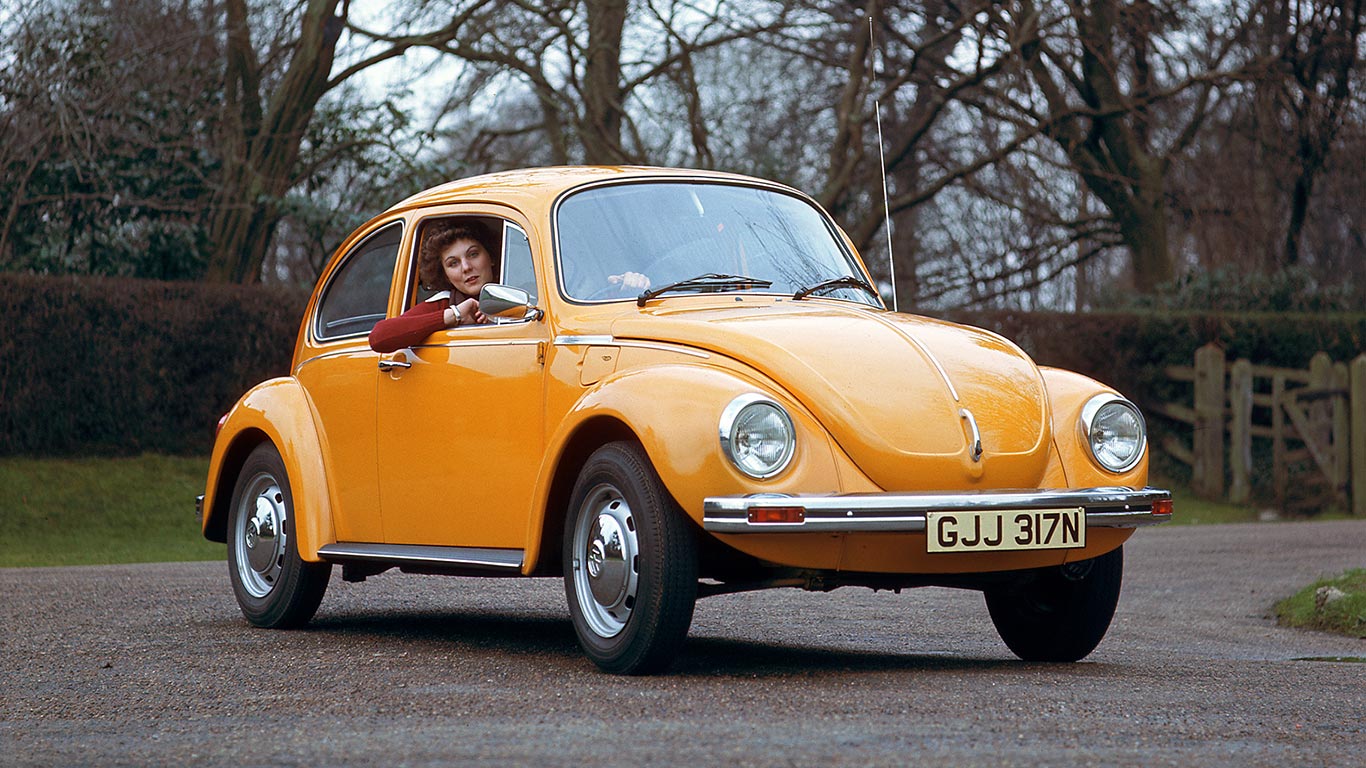
Where do you think the first Beetle made outside of Germany was produced? Mexico, South Africa, New Zealand? Nope, all wrong. It was actually in Ireland in 1950, which began creating Beetles from ‘knock-down kits’ supplied in crates from Germany.
Located in Ballsbridge, a suburb of Dublin, the Irish Volkswagen franchise was run by Stephen O’Flaherty, who later acquired the rights for the UK franchise as well. By 1952, demand for the Beetle had grown so much that a new factory was needed. Assembly of the classic VW continued until 1977.
Heinkel Kabine
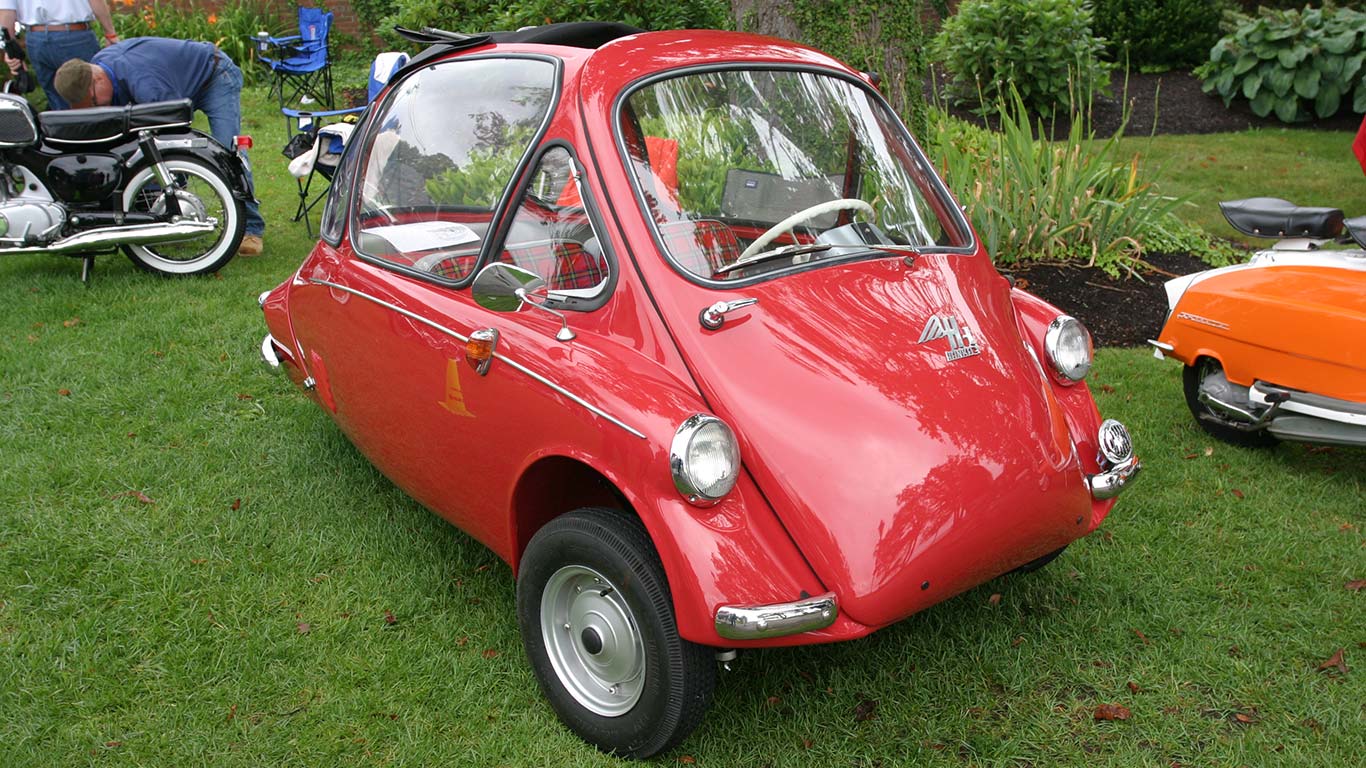
Created to challenge the Iso Isetta microcar, aircraft designer Ernst Heinkel felt he could bring aeroplane technology to the burgeoning ‘bubble car’ market. With a one-cylinder engine from the Heinkel Tourist scooter producing a hefty 9.2hp, the 54mph top speed of the Kabine is more impressive than it first appears.
By June 1958, a lack of manufacturing capacity at Heinkel’s German factory saw the whole Kabine production line sold to the Dundalk Engineering Company in Ireland. Irish microcar manufacturing was short-lived, with the Heinkel licence withdrawn due to quality issues and concerns about the state of the factory.
Renault 4
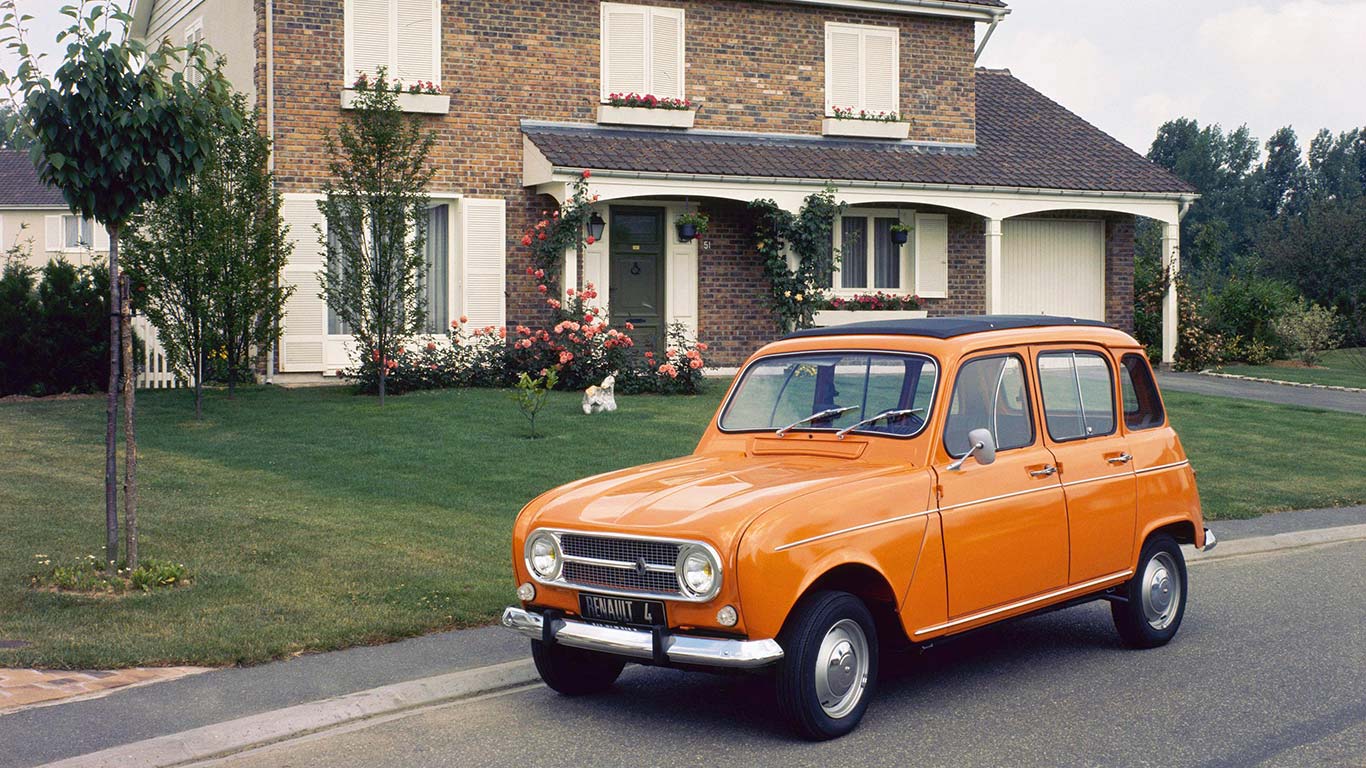
With a production-run spanning more than three decades, and with over eight million examples made across the globe, the Renault 4 is recognised as one of the most successful budget cars ever sold. Factories in 16 different countries built the 4, but Ireland actually had two production plants.
Irish Renault 4 manufacturing began in 1962 at the Naas Road factory. For 1972, the franchise would switch to the Thompson Motor Company (of TMC Costin fame), who continued assembly until 1982. Numbers were low, with around 100 cars a week leaving the Wexford factory. It later went on to make parts for the 4 instead.
Hillman Hunter
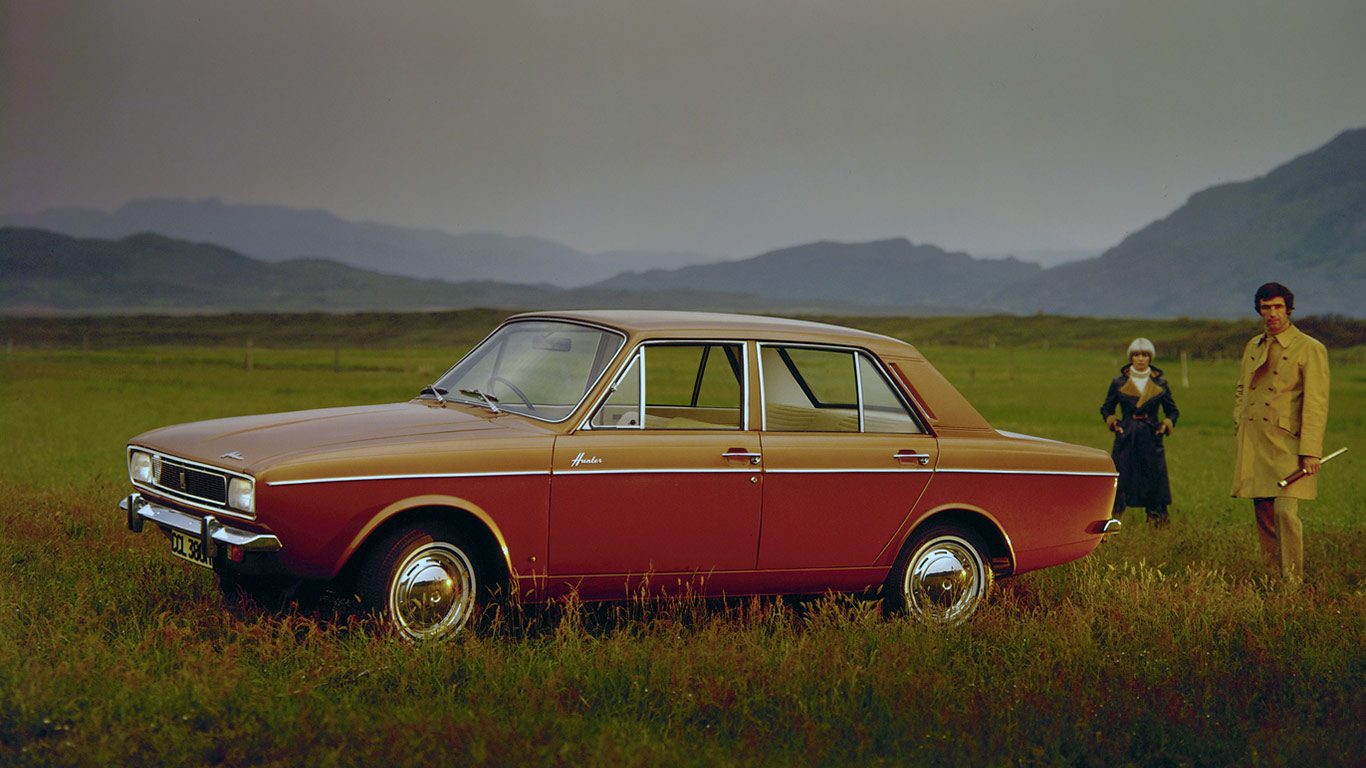
The history of the Rootes Group, and its arduous journey into Chrysler Europe before extinction, typifies the challenges faced by the UK car industry. Ireland’s involvement in the Rootes story was relatively positive, with production of the Hunter shifted to the Santry factory near Dublin in 1976.
The Hunter remained in production for just three years, when the European operations of Chrysler were sold off to PSA Peugeot-Citroen. It is worth noting that the Hunter continued to be built in Iran until 2005, with parts of the production line moved there from Ireland.
Ford Sierra
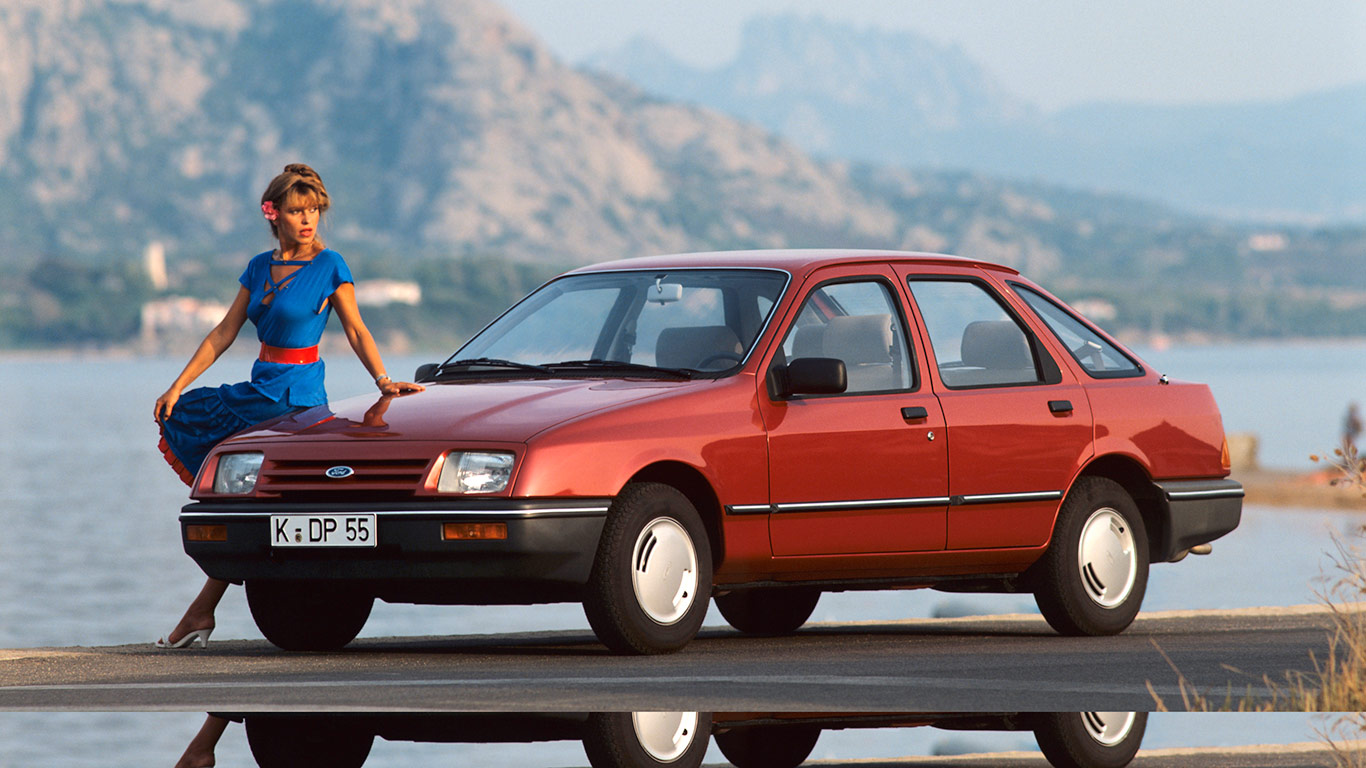
As one of the first Ford factories outside of the United States, the Cork City plant began life with the production of Fordson tractors in 1917. Car assembly followed, with various models of Prefect, Cortina, and Escort all leaving the gates of the plant – which was situated on 132 acres of former racecourse. The site was chosen personally by Henry Ford, who had ancestral links to the Cork area.
The final product to be built at the Cork was the radical first-generation Sierra, which debuted in 1982. Ford made a significant investment in tooling the plant to assemble the Sierra, but Cork was no match for the more efficient factories in Belgium and Germany. Irish luck finally ran out in 1984.


